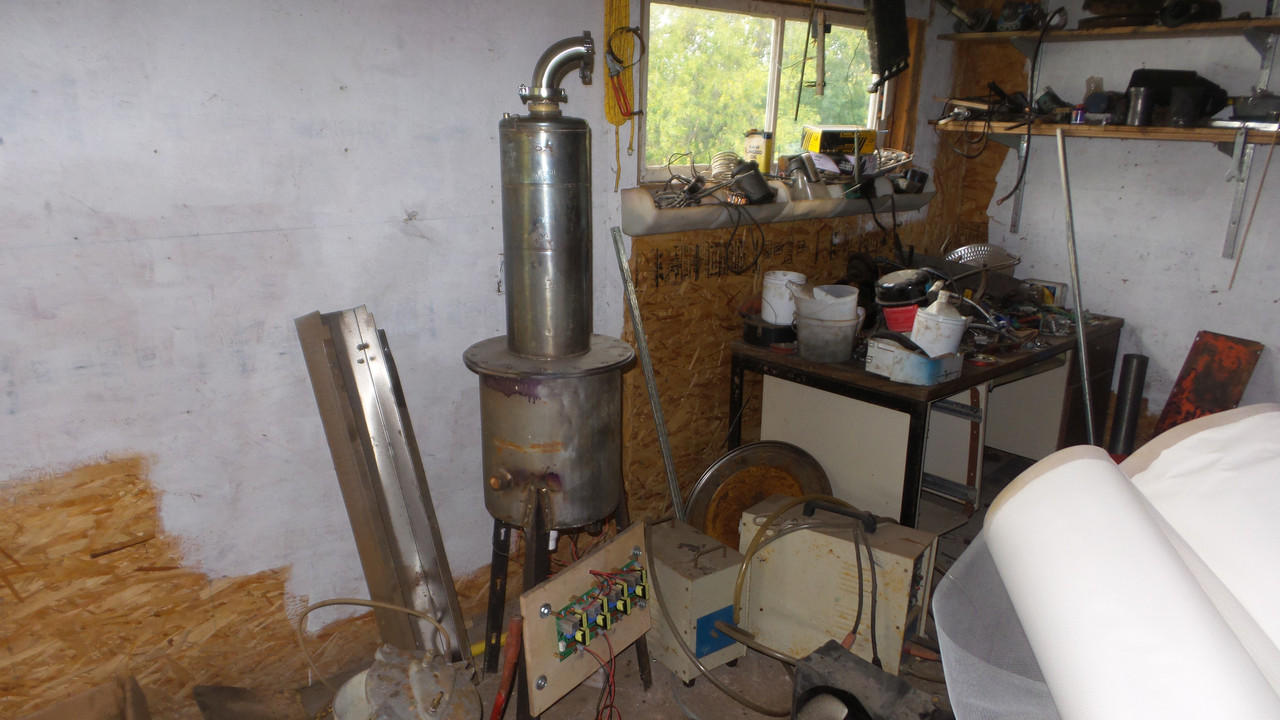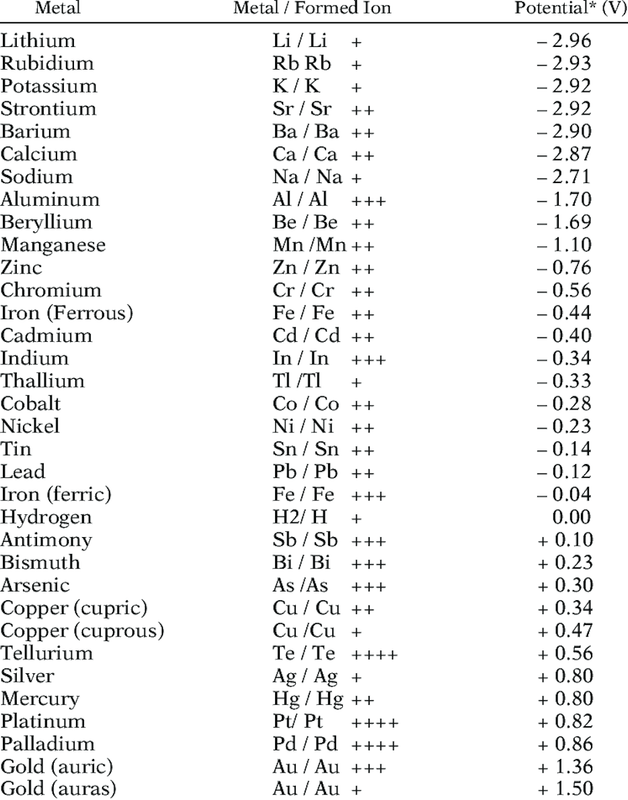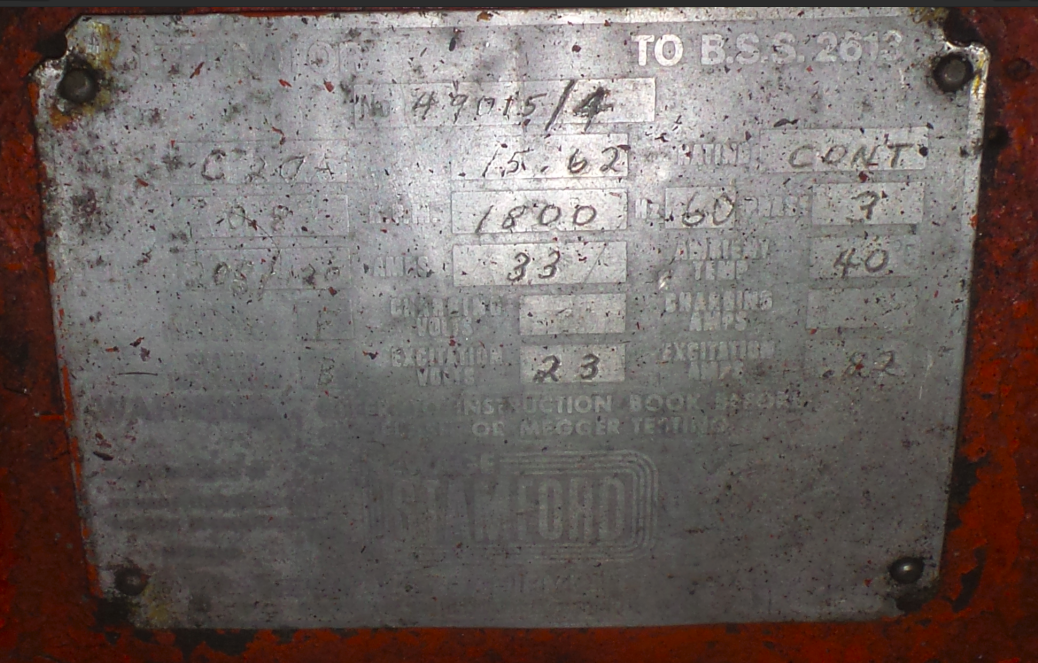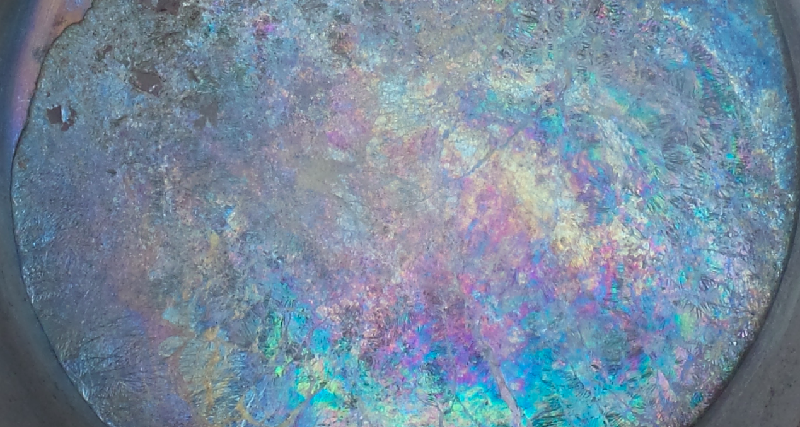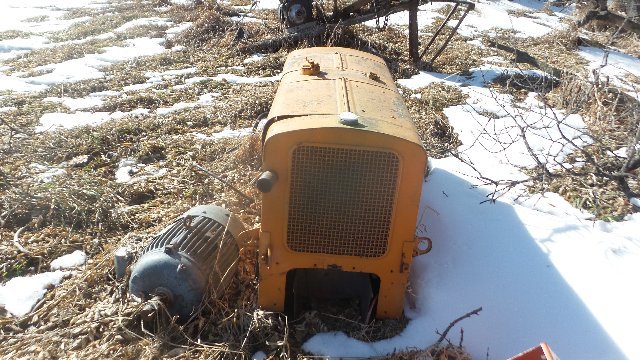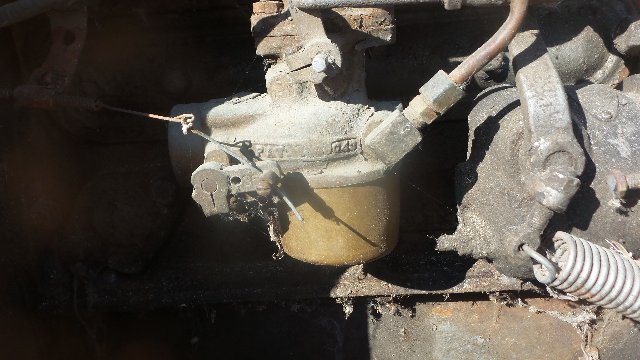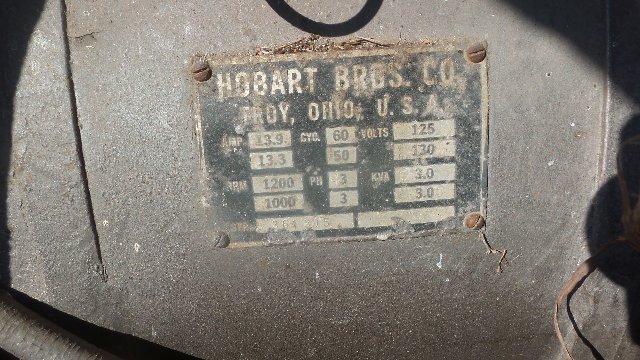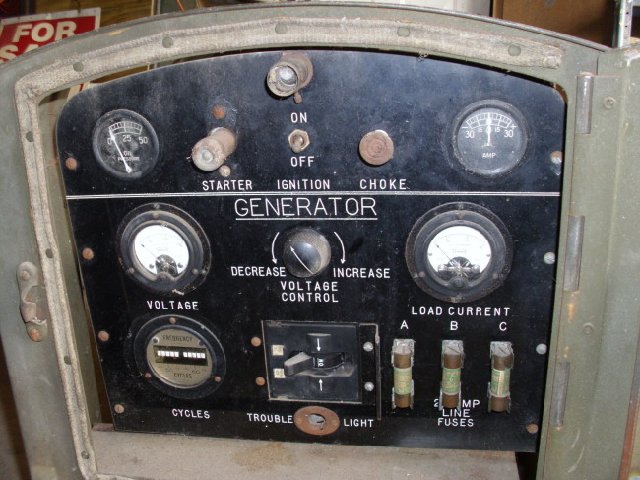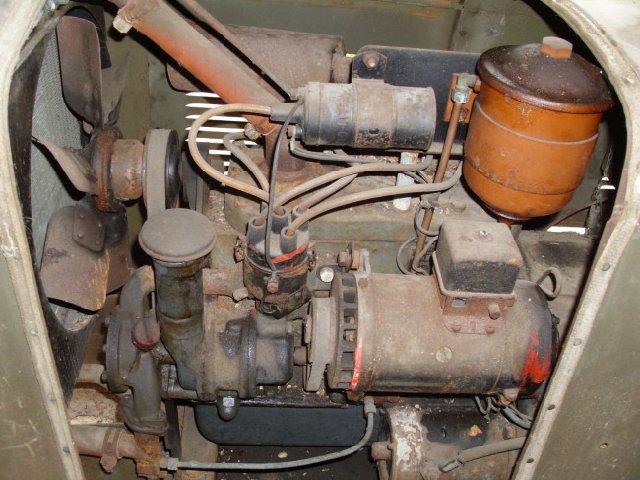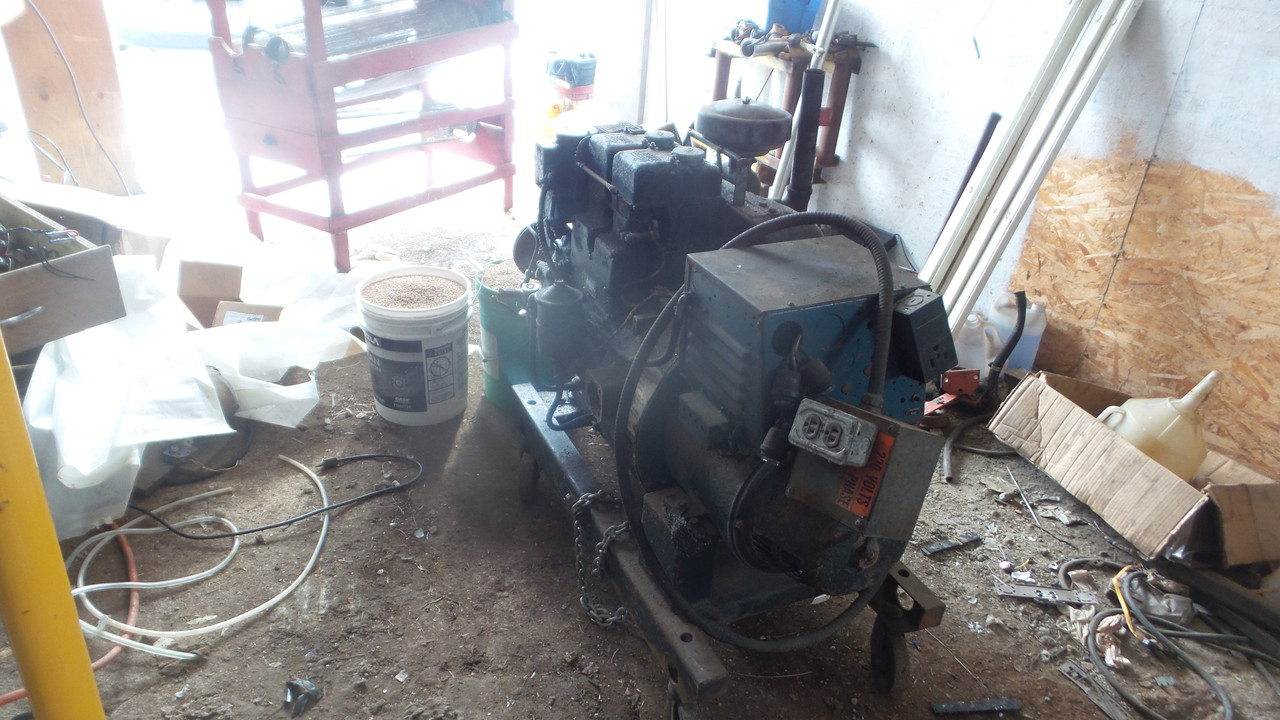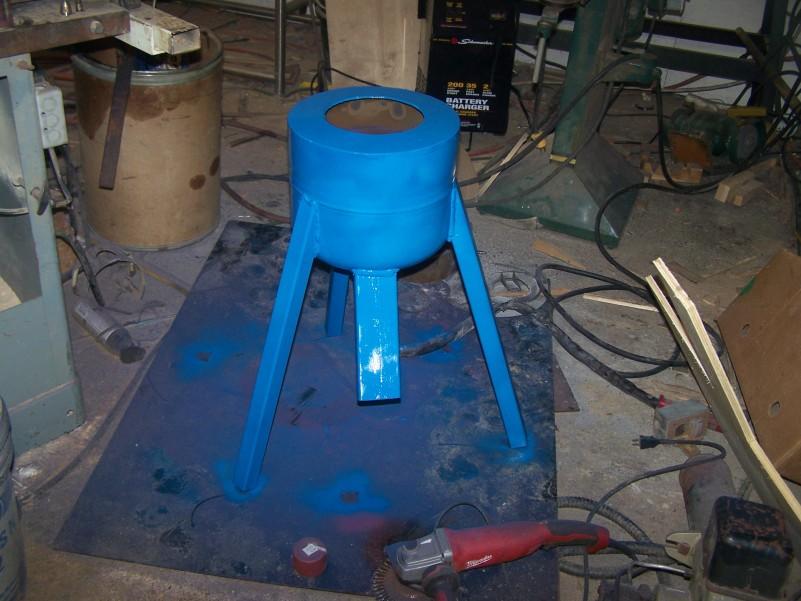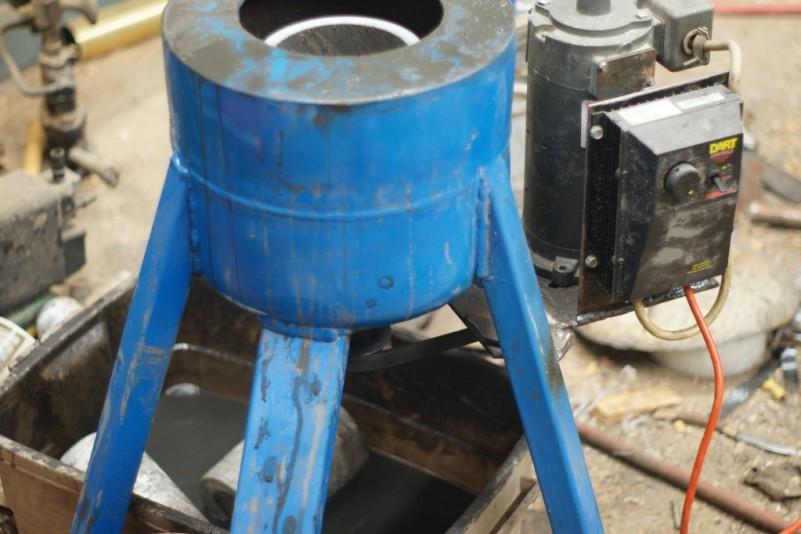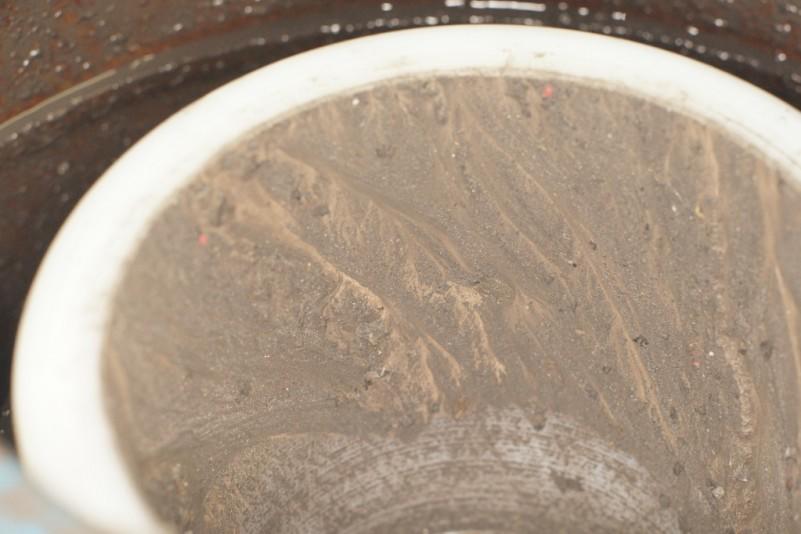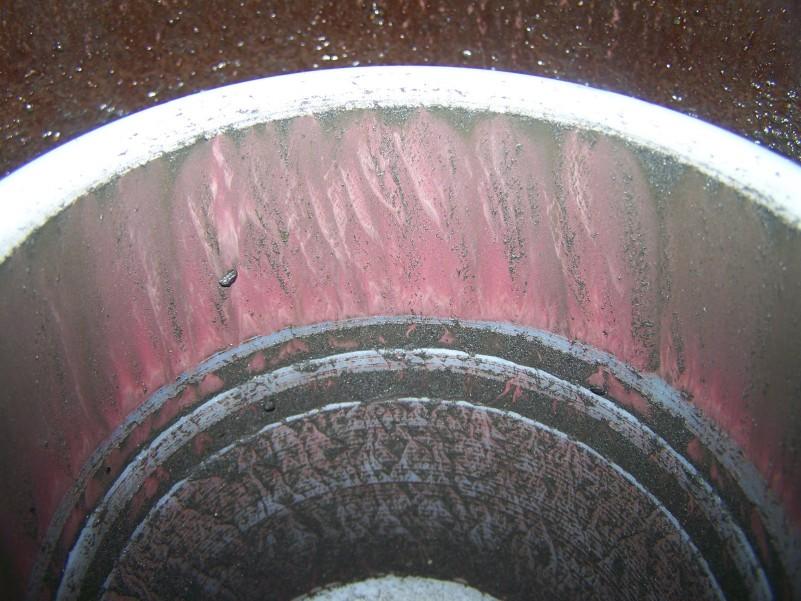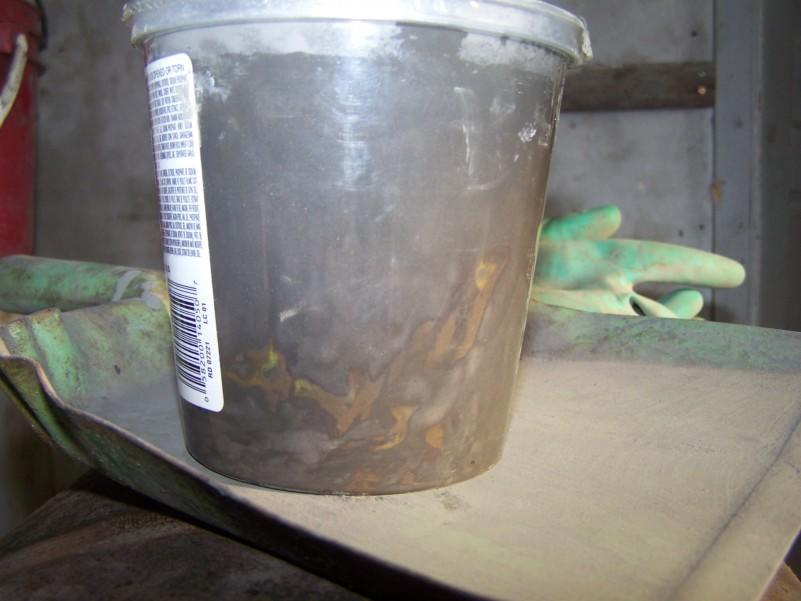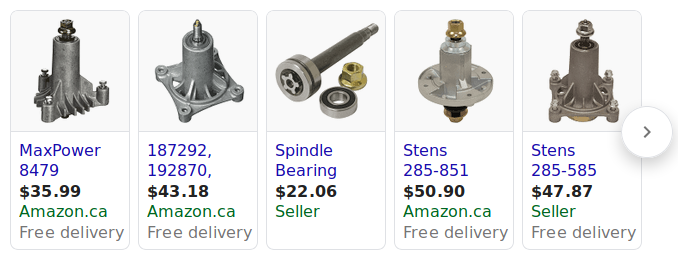I built a five gallon tank with four 25mhz transducers that I use to recover precious metals from catalytic converters.
I'm far from being the brightest light in the string and often find myself being the victim of an experiment gone wrong.
In the beginning of this great adventure decided to add dish detergent to break the surface tension of the water to prevent float.
Aside from ending up with more foam than I had containers for the foam did work similar to a process called froth flotation.
As you can see to some degree I've discovered the magic of ultrasonics and would like to expand my knowledge of its use.
gort has me working overtime on this wet oil, and started doing some research when I came across this interesting peace
Full article and credits,
https://www.e-sciencecentral.org/articles/SC000015241Research Articles
Journal of Biosystems Engineering 2012; 37(6): 429-433.
DOI:
https://doi.org/10.5307/JBE.2012.37.6.433Viscosity Characteristics of Waste Cooking Oil with Ultrasonic Energy Irradiation
Tae Han Kim*, Jung Keun Han
Department of bio-industrial machinery Engineering, Kyungpook National University, Daegu, Korea
*Tae Han Kim Tel: +82-53-950-5793; Fax: +82-53-950-6780 E-mail: thakim@kun.ac.kr
Received 15 October 2012 Revised 16 December 2012 Accepted 31 December 2012
Copyright © 2012, Korean Society for Agricultural Machinery
(open-access,
http://creativecommons.org/licenses/by-nc/3.0/):
This is an Open Access article distributed under the terms of the Creative Commons Attribution Non-Commercial License (http://creativecommons.org/licenses/by-nc/3.0/) which permits unrestricted non-commercial use, distribution, and reproduction in any medium, provided the original work is properly cited.Abstract
Purpose:
While rapeseed oil, soy bean oil, palm oil and waste cooking oil are being used for biodiesel, the viscosity of them should be lowered for fuel. The most widely used method of decreasing the viscosity of vegetable oil is to convert the vegetable oil into fatty acid methyl ester but is too expensive. This experiment uses ultrasonic energy, instead of converting the vegetable oil into fatty acid methyl ester, to lower the viscosity of the waste cooking oil.
Methods:
For irradiation treatment, the sample in a beaker was irradiated with ultrasonic energy and the viscosity and temperature were measured with a viscometer. For heating treatment, the sample in a beaker was heated and the viscosity and temperature were measured with a viscometer. Kinematic viscosity was calculated by dividing absolute viscosity with density.
Results:
The kinematic viscosity of waste cooking oil and cooking oil are up to ten times as high as that of light oil at room temperature. However, the difference of two types of oil decreased by four times as the temperature increased over 83℃. When the viscosity by the treatment of ultrasonic energy irradiation was compared to one by the heating treatment to the waste cooking oil, the viscosity by the treatment of ultrasonic energy irradiation was lower by maximum of 22% and minimum of 12%, than one by the heating treatment.
Conclusions:
Ultrasonic energy irradiation lowered the viscosity more than the heating treatment did, and ultrasonic energy irradiation has an enormous effect on fuel reforming.
Go to : Goto
Keywords: Waste cooking oil, Viscosity characteristics, Ultrasonic energy, Heating, Density
Introduction
Recently biodiesel has been receiving increasing attention as an alternative fuel due to the finiteness of fossil fuel and reduction of greenhouse gas. Biodiesel contains 8.5~11% oxygen and it is expected to reduce the harmful gas from diesel engine (Nishino et al., 2009). Biodiesel raw materials vary according to the countries; for example, European countries use the rapeseed oil, USA uses the soybean oil, Southeast Asian countries use the Palm oil, and Japan uses the waste cooking oil. Germany, France and Italy occupy the majority of worldwide biodiesel production (1,800,000 kL) (Nishijaki, 2006).
Waste cooking oil should be processed to lower the viscosity to use as diesel fuel. The high viscosity of the vegetable oil causes incomplete combustion in a combustion chamber and hinders the engine operation. Transformation of fatty acid into methyl ester is the most widely used technology to lower the viscosity of vegetable oil. The technology is safe and commercialized because it make mass production possible. However, it has several disadvantages: it cannot be applied to a small device, it needs a process to remove water and free fatty acids in raw materials, and it costs a lot to purify glycerin, which is a by-product of esterification.
For these reasons, a non-catalytic biodiesel production route with supercritical methanol has been developed to purify the vegetable oil. The new technology produces a single layered liquid without glycerin. However, the technology needs manufacturing equipment such as anticorrosive reactor, high-pressure pump, back pressure pump, and heat exchanger (Iljima et al., 2008). In Korea, there are lots of research on the experiment of agricultural engines using biodiesel which was processed by esterification with soybean oil (Choi and Oh, 2010) and rapeseed oil (Choi and Byeon, 2009).
However, there is little research on biodiesel for agricultural engines without esterification in waste cooking oil. According to Chung and Park (2010), using ultrasonic energy irradiation in transesterification made reaction faster and acid value lower over 30%. In addition, Im et al. (2007) reported that ultrasonic energy irradiation to biodiesel blended fuel lower the viscosity. The result, however, was not clear if the viscosity was lowered due to the ultrasonic irradiation or heating treatment of raw materials. Thus, this study will compare the viscosity changes of ultrasonic irradiation and heating treatment which are used for lowering viscosity without esterification in waste cooking oil.
Materials and Methods
The viscosity of sample was measured using Brookfield Viscometer (LVDV-II+Pro. Brookfield Engineering Laboratory, USA) as shown in Figure 1. After the sample in a beaker was heated, the absolute viscosity and temperature were measured using viscometer. For density calculation, the volume and weight were measured while heating the sample in a measuring cylinder. Kinematic viscosity was calculated by dividing absolute viscosity by density.
ksam-37-429-g001.tif
Figure 1.
Brookfield viscometer.
Download Figure
Figure 2 shows the ultrasonic generator (VCX750, Sonic and Material Inc. USA). The ultrasonic generator creates high frequency electric energy with 230V of the source of electric power. The voltage creates 20,000 sparks per second to the piezoelectric crystal and the crystal transforms into mechanical vibration with 20,000 expansion and contraction per second. The vibration is amplified by the probe and transmitted to the sample. The converter has four piezoelectric crystals. The ultrasonic wave generator digitally displays the actual amount of energy in joules (or watts) that is being delivered to the probe. The sample in a beaker was irradiated with ultrasonic energy, and its viscosity was measured with the viscometer. One can choose the amount of ultrasonic energy irradiation being delivered to the probe between 150 W to 750 W. The amount of ultrasonic energy irradiation was set at 600 W for this experiment.
ksam-37-429-g002.tif
Figure 2.
Schematic diagram of ultrasonic generator.
Download Figure
Table 1 shows the specification of ultrasonic generator. The amplitude of the probe is 35 ㎛, diameter and length are 19 mm, 136 mm respectively.
Table 1.
Specification of ultrasonic generator
Probe Dia.× Length (mm) 19 ×136
Prove Type Solid
Amplitude of probe tip (μm) 61
Convertor Dia.× Length (mm) 63.5 ×183
Capacity (㎖) 10 to 250
Ultrasonic irradiation energy (W) 150 to750
Download TableDownload Table
The ceramic heater (MS400, BANTE, Chicago, USA), a heating device which can control the temperature of samples within the beaker, was used to heat the waste cooking oil. The temperature of samples within the beaker was measured with the thermocouple. The materials used in the experiment included waste cooking oil, cooking oil, light oil, and blended oil.
BD20, 40, 60, and 80 mean the light oil is blended with waste cooking oil with 20, 40, 60, and 80% v volume ratio respectively. BD0 means 100% light oil, and BD100 means 100% waste cooking oil. Waste cooking oil was filtered once with No. 500 wire-mesh.
Results and Discussion
Figure 3 shows the density of waste cooking oil, cooking oil, and light oil. Waste cooking oil was filtered once with No. 500 wire-mesh. As in the figure below, waste cooking oil and cooking oil showed 10% higher density compared to the density of light oil. Furthermore, the densities of three types of oil decreased as temperature increased.
ksam-37-429-g003.tif
Figure 3.
Relation between temperature and density of various oils.
Download Figure
Figure 4 shows the kinematic viscosity of waste cooking oil, cooking oil, and light oil. The kinematic viscosity of waste cooking oil and cooking oil were up to ten times as high as that of light oil at room temperature. However, the differences of kinematic viscosity in two types of oil reduced four times as the temperature increased above 70℃. This indicates that waste cooking oil should be heated for fuel used in agricultural engines without esterification. In addition, the kinematic viscosity of filtered waste cooking oil was 10% higher than that of cooking oil at room temperature, but the differences decreased with increasing temperature and became the same value above 45℃.
ksam-37-429-g004.tif
Figure 4.
Relation between temperature and kinematic viscosity of various oils.
Download Figure
Figure 5 shows the kinematic viscosity of light oil after the ultrasonic energy irradiation and heating treatment. As shown in Figure 5, there was no difference in kinematic viscosity between ultrasonic energy irradiation and heating below 50℃, but above the 50℃ viscosity of ultrasonic energy irradiation was 5~6% lowered than that of heating. It indicates that ultrasonic energy irradiation lowered the viscosity. This is caused by ultrasonic cavitation.
ksam-37-429-g005.tif
Figure 5.
Effect of ultrasonic energy irradiation on viscosity for light oil.
Download Figure
When ultrasonic wave is irradiated in the solution, the solution periodically repeats compression and expansion. In this expansion, micro-bubbles are formed in the solution. When these bubbles are compressed over the surface force, the solution immediately shrinks, explodes, and produces shockwaves. Because of these shockwaves, the solution disperses and decomposes, accompanied by high pressure and temperature. This is called phenomena of ultrasonic cavitation. The viscosity of oils decreases caused by ultrasonic cavitation.
The ultrasonic waves generate acceleration of particles of medium and collapse the dissolved air molecule in the fluids, and the decrease in viscosity of various oils is caused by ultrasonic cavitation.
Figure 6 shows the kinematic viscosity after the ultrasonic energy irradiation and heating treatment in the light oil blended with waste cooking oil with 60% of volume ratio (BD60). As shown in Figure 6, the ultrasonic energy irradiation lowered the kinematic viscosity 21% the maximum and 9% the minimum. Compared with the results in Figure 4, ultrasonic energy irradiation lowered the viscosity of the blended oil (BD60) than the light oil. This shows that ultrasonic cavitation is occurring more actively in blended oil than in light oil.
ksam-37-429-g006.tif
Figure 6.
Effect of ultrasonic energy irradiation on viscosity for BD60.
Download Figure
Figure 7 shows the kinematic viscosity after the ultrasonic energy irradiation and heating treatment in waste cooking oil. As shown in Figure 7, when the viscosity by the treatment of ultrasonic energy irradiation was compared to one by the heating treatment to the waste cooking oil, the viscosity by the treatment of ultrasonic energy irradiation was lower by maximum of 22% and minimum of 12%, than one by the heating treatment. This shows that ultrasonic energy irradiation of waste cooking oil yields a greater decrease in viscosity than heating treatment of waste cooking oil. This is caused by ultrasonic cavitation.
ksam-37-429-g007.tif
Figure 7.
Effect of ultrasonic energy irradiation on viscosity for wasted cooking oil.
Download Figure
Figure 8 shows the viscosity changes of waste cooking oil in relation to the ultrasonic energy irradiation time. The kinematic viscosity decreased until 10 minute ultrasonic energy irradiation, and it became stable. Thus it is optimal to irradiate waste cooking oil for 10 minutes.
ksam-37-429-g008.tif
Figure 8.
Relation between ultrasonic energy irradiation time and kinematic viscosity of wasted cooking oils.
Download Figure
After performing ultrasonic energy irradiation for ten minutes, the temperature of the waste cooking oil is 83℃.
Figure 9 shows the kinematic viscosity of waste cooking oil, blended oil with light oil and waste cooking oil, and light oil according to the ultrasonic energy irradiation time. When the mixing ratio of waste cooking oil was low, the viscosity became low and similar to the viscosity of light oil. Before ultrasonic energy irradiation, the kinematic viscosity of BD100, 80, 60, 40, 20, 0 were 137.6 cSt, 39.7 cSt, 23.0 cSt, 13.9 cSt, 7.3 cSt, 5.2 cSt respectively. However, after ultrasonic energy irradiation, they became 7.8 cSt, 5.5 cSt, 4.0 cSt, 2.8 cSt, 2.0 cSt, 1.8 cSt respectively, and their decreasing ratio were 94%, 86%, 82%, 80%, 73%, 65%.
ksam-37-429-g009.tif
Figure 9.
Effect of ultrasonic energy irradiation on viscosity for various blended oils.
Download Figure
Conclusions
Biodiesel has similar characteristics with light oil. Because it contains oxygen, it can control emissions. For the fuel injected into the combustion chamber of the diesel engine to combust completely, atomization has to be favorable. This atomizing ability is optimum when viscosity is low. However, since vegetable oil has high viscosity, its viscosity must be decreased for it to be used as a diesel fuel. This study examined the viscosity changes of ultrasonic irradiation and heating treatment which are used for lowering viscosity without esterification in waste cooking oil.
The kinematic viscosity of waste cooking oil and cooking oil were higher than that of light oil by 10 times the maximum at room temperature. However, the differences of kinematic viscosity in two types of oil reduced four times as the temperature increased above 70℃. In addition, the kinematic viscosity of filtered waste cooking oil was 10% higher than that of cooking oil at room temperature, but the differences decreased with increasing temperature and became the same value above 45℃. The ultrasonic energy irradiation lowered the kinematic viscosity 22% the maximum and 12% the minimum than heating treatment. The ultrasonic energy irradiation lowered the kinematic viscosity 21% the maximum and 9% the minimum in the light oil blended with waste cooking oil with 60% volume ration (BD60). 10 minute irradiation was optimal for waste cooking oil. 10 minute irradiation to the blended oil of BD 100, 80, 60, 40, 20, 0 reduced the kinematic viscosity 94%, 86%, 82%, 80%, 73%, 65% respectively.
Conflict of Interest
No potential conflict of interest relevant to this article was reported.
ACKNOWLEDGMENTS
This research was supported by Basic Science Research Program through the National Research Foundation of Korea (NRF) funded by the Ministry of Education, Science and Technology (No. 2011-00065).
References
1. H. Choi J. W. Byeon . Combustion Characteristics of a Direct Injection Agricultural Diesel Engine with Rapeseed Oil. Journal of Biosystems Engineering. 2009; 34(3):135–139. (In Korean, with English abstract). DOI: 10.5307/JBE.2009.34.3.135.
[CrossRef] [Google Scholar]
2. S. H. Choi Y. T. Oh . A Study on Engine performance and Exhaust Emission for Biodiesel lending Ratios and Fuel Injection Timing in an Indirect Injection Compression Ignition Engine. Journal of Biosystems Engineering. 2010; 35(4):239–243. (In Korean, with English abstract). DOI: 10.5307/JBE.2010.35.4.239.
[ScienceCentral] [CrossRef] [Google Scholar]
3. K. H Chung B.G. Park . Biodiesel Production from Vegetable Oils by Transesterification Using Ultrasonic Irradiation. Appl. Chem. Eng. 2010; 21(4):385–390. (In Korean, with English abstract).
[Google Scholar]
4. W. Iljima Y. Kobayash K. Taniwaki . Development of New Technology for Alternative diesel Fuel Production Involving Simultaneous Application of Methanolysis and Thermal Cracking (Part 1). Journal of JSAM. 2008; 70(2):120–126. (In Japanese, with English abstract).
[Google Scholar]
5. S.Y. Im Y. S. Song Y. C. Jung D.S. Choi J.I. Ryu . An Experimental Study on Physical and Chemical Characteristics with Biodiesel blended Fuel According to Ultrasonic Energy Irradiation Time. In : Proceeding of KSAE 2007 Spring Conference; 2007; 539–546. (In Korean, with English abstract).
6. K. Nishijaki . The Use of Biofuel for Agricultural Machinery. Journal of JSAM. 2006; 68(2):4–8. (In Japanese, with English abstract).
[Google Scholar]
7. K Nishino. Y. Miyata Y. Shibuya N. Noguchi . Application to Small-sized Diesel Engine of Biodiesel Fuel Generated from Rapeseed Oil. Journal of JSAM. 2009; 71(5):88–94. (In Japanese, with English abstract).
[Google Scholar]
Formats:
Article |
PDF LinksPDF(790K) | PubReaderPubReader | EpubePub |
Download Citation
Share |
[Facebook] [Twitter] [LinkedIn] [Google+]
METRICS
1,086
View
33
Save
0
Cited-By
In This Page:
ABSTRACT
Related articles in ScienceCentral:
Investigation of Centrifugal Rice Seeder for Unmanned Helicopter
[J. of Biosystems Eng.. 2012]
Evaluation of Spray Flight Attitude for Agricultural Roll-balanced Helicopter using Kalman Filter
[J. of Biosystems Eng.. 2012]
Development of an Inexpensive Black Box with Transmission of SOS and Theft Signal for an Agricultural Tractor
[J. of Biosystems Eng.. 2012]
Development of Vibration Absorption Device for the Transportation -Trailer System (IV)
[J. of Biosystems Eng.. 2012]
Study on the Treatment Performance of SCB-M with Swine Manure
[J. of Biosystems Eng.. 2012]
.
